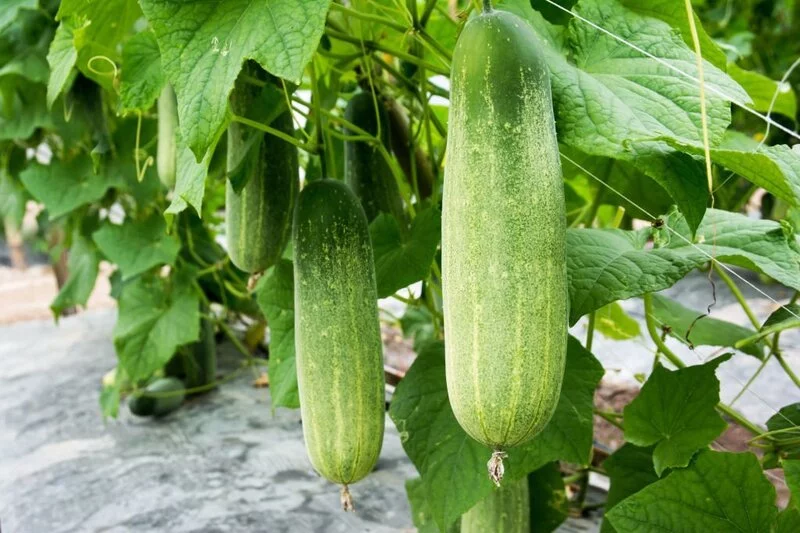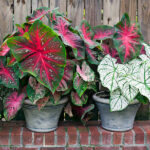Have you ever looked at your garden and thought about what you’re planting next to each other? Some plants get along splendidly, while others… not so much. Just like in a schoolyard, some plant buddies work together better than others. In our chat today, we will discuss two popular garden favorites, cucumbers and tomatoes, and why they may not be the best neighbors.
- High Breed Live Plants in Pots. Indoor or Outdoor Backyard Gardening Vegetable Garden
- New stocks Fast-growing plants from high breed selected seeds
- Will grow up really fast with appropriate care
- Big, deep green vegitables that grow long upto 8″.
- Plants produce multiples or more if kept harvested and well-watered
Growth Habits of Cucumbers and Tomatoes
First, let’s get to know our plants a little better. Cucumbers are vine plants. They love to stretch out their tendrils, climb, and spread out as they grow. On the other hand, tomatoes are what we call upright plants. They love to reach for the sky, growing tall and strong. So, we have one that likes to roam around and one that prefers to stand tall. They both sound great, right? But, when it comes to planting them together, these different habits can cause a bit of a tangle. We’ll learn more about this in the next sections.
The Role of Companion Planting
Just like how best friends bring out the best in each other, certain plants do the same. This is called ‘companion planting’. Some plant pals help each other grow better, ward off pesky bugs, or even improve each other’s flavor! It’s like having a good buddy who always has your back. But not all plants make good buddies. Sometimes, two plants are just too different to work well together, like our cucumbers and tomatoes.
Reasons Not to Plant Cucumbers Near Tomatoes
So, what happens when you try to plant cucumbers and tomatoes too close together? Here’s where the trouble begins. Because cucumbers spread out and tomatoes grow up, they start to fight for space. It’s like trying to do a dance in a crowded room. They trip over each other, and nobody has a good time. Plus, they can even block each other’s sunshine, and we all know how important sunshine is for plants! So it’s better to give these two some space and let them do their own thing. They’ll be happier, and so will your garden.
Suggestions for Good Companions for Cucumbers and Tomatoes
Now that we know cucumbers and tomatoes aren’t great dance partners, who should they dance with? Well, cucumbers get along great with beans and peas. These buddies help each other out and don’t step on each other’s toes. For tomatoes, basil and marigolds make excellent friends. Basil helps improve tomatoes’ flavor, and marigolds keep harmful bugs away. It’s like having a best friend who makes you feel better and another who keeps the bullies away!
- Dunn, Mary R. (Author)
- English (Publication Language)
- 24 Pages – 07/31/2017 (Publication Date) – Capstone Pr Inc (Publisher)
- So Many Green Beans – Kentucky Wonder Pole beans are the standard pole bean to grow from seeds because the plant produces heavy yields and is super easy to grow. Each vine will produce numerous pods of delicious green beans that reach from 7-10 inches long.
- Versatile Snap Bean – Kentucky Wonder Pole pods are stringless if harvested young at 5″ or smaller. Harvest frequently to improve production, and succession plant as needed. These vines will require support like a pole or trellis to climb.
- Sustainable Living – Vegetable gardening is an essential foundation of a more self-sufficient lifestyle. Home-grown green beans are generally more flavorful and nutritious than store-bought. Kentucky Wonder Pole beans are excellent whether canned, frozen, or pickled for long-term storage. If grown to full maturity, it can also be a delicious shelling bean.
- Easy to Grow – Seeds are packed in a beautiful paper packet with instructions for successful growing and germination in your home garden. Each package also has instructions for saving seeds after harvest. Getting started is simple for both beginner and experienced gardeners.
- Quality Seeds – Plant now or store for future growing seasons. These seeds will remain viable for years if stored in a cool dry location. Our safe, non-hybrid non-GMO heirloom seeds are always open-pollinated, untreated, and selected to ensure the best germination rates.
- Dunn, Mary R. (Author)
- English (Publication Language)
- 24 Pages – 07/31/2017 (Publication Date) – Capstone Pr Inc (Publisher)
Conclusion
Gardening is a bit like planning a party. You want everyone to get along and have a good time. And, just like at a party, you need to be careful about who you place next to whom. Tomatoes and cucumbers might both be stars of the garden, but they don’t perform well together. By choosing the right companions for each of your plants, you’ll create a harmonious garden where everyone thrives. So, put on your gardening gloves, pick your companions wisely, and let’s get planting!








